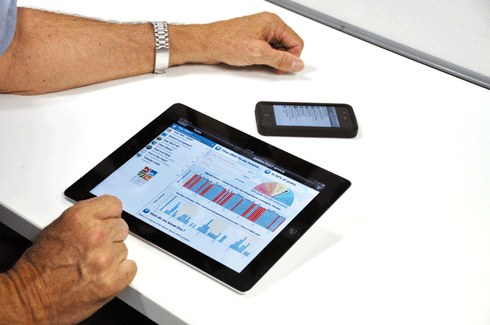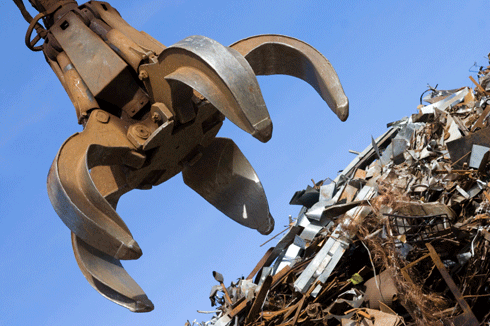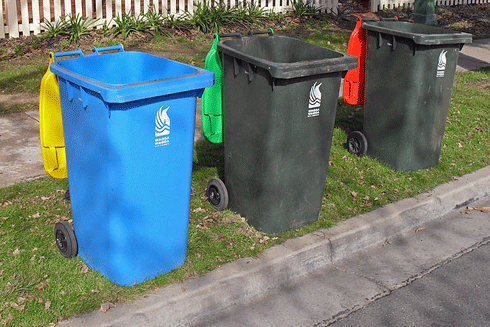
|
Published: 21 January 2013
Free climate phone app for farmers
Australian CliMate is a new iTunes app for farmers that can help them with better decisions about their farming operations based on recent weather and likely climate probabilities.

|
|
The app is available for iPhone, iPad and iPod touch devices. A web version of the app will be available in March. Credit:
De-Anne Attard, RPS
|
The free CliMate app allows farmers to quickly interrogate the last 60 years of daily rainfall, temperature and radiation data for their location. Seasonal forecasts are provided based on current ENSO conditions. It also calculates heat sums and estimates soil water and soil nitrate accumulation.
The app was developed by the national Managing Climate Variability (MCV) program to help farmers make sense of past climate statistics and forecasts for their own location, to better manage their business.
MCV Project Leader, Dr David Freebairn, Principal Environmental Scientist with energy and environment consultancy, RPS, says the team was excited that the app was accepted on first submission to iTunes. It is currently available for iPhone, iPad and iPod touch devices. A web version of the app will be available in March.
CliMate can be downloaded by searching for ‘Australian Climate’ in the iTunes App store.
‘Since it was first loaded on iTunes in mid-December last year it has already been taken up by more than 1300 people with no publicity,’ Dr Freebairn says. ‘And the news is spreading fast so hopefully it will go viral.
‘With spare time on their hands, 300 people downloaded CliMate on Christmas and Boxing days – what a great present’.
Prototypes of the program were reviewed by farmers participating in the Climate Champion program and leading grain growers through Grains Research and Development Corporation regional panels.
The question-based logic in CliMate is designed to suit anyone who uses probabilities of weather events in their decision making, whether they be a grain grower, grazier or grape grower.
Peter Holding, a Climate Champion farmer in south east NSW with winter crops and wool lambs, is already a fan of CliMate.
‘I find it very good for clarifying my vision of what I think is happening,’ he says. ‘As I get closer to sowing I will definitely be running the how wet /nitrogen section to see if my estimates compare with the App and maybe refine my final decisions.
‘The ability to try different scenarios very quickly and simply is a great way of improving my decision-making and understanding of the climate in our area.’
Mathew Pitt, a Climate Champion farmer with mixed enterprises from Tasmania, says: ‘For me, it simplifies the ability to do ‘what if scenarios’ when assessing options. It also has the ability to give you a look behind in the current season for things other than rainfall. Temperature variation is becoming crucial when deciding what crops to plant.’
The seven key tools of CliMate are:
-
How often? What is the chance of planting rain based on an amount of rainfall over so many days? How often is a heat sum achieved in a period of time? What is the probability of temperature being below a critical level for germination or flowering?
-
How hot-cold? When determining an ideal sowing date, when are heat and cold stresses lowest for the optimum flowering time?
-
Season’s progress? When adjusting inputs during a crop or pasture season, how does the current season compare with previous seasons in terms of rainfall, temperature, heat sum or radiation?
-
How wet? How much water and nitrate have I stored over the fallow? This may help me adjust inputs to better match yield expectations.
-
How likely? Based on current ENSO conditions, what is the probability that rainfall or temperature is greater than or less than key thresholds (e.g. terciles, median) and how reliable have these forecasts been in the past?
-
How’s El Nino? What is the current ENSO status based on key atmospheric and oceanic indicators? What is the Australian Bureau of Meteorology’s interpretation of this?
-
How’s the Past? What have been the monthly and annual rainfall and temperature summaries in the past?
Source: MCV





